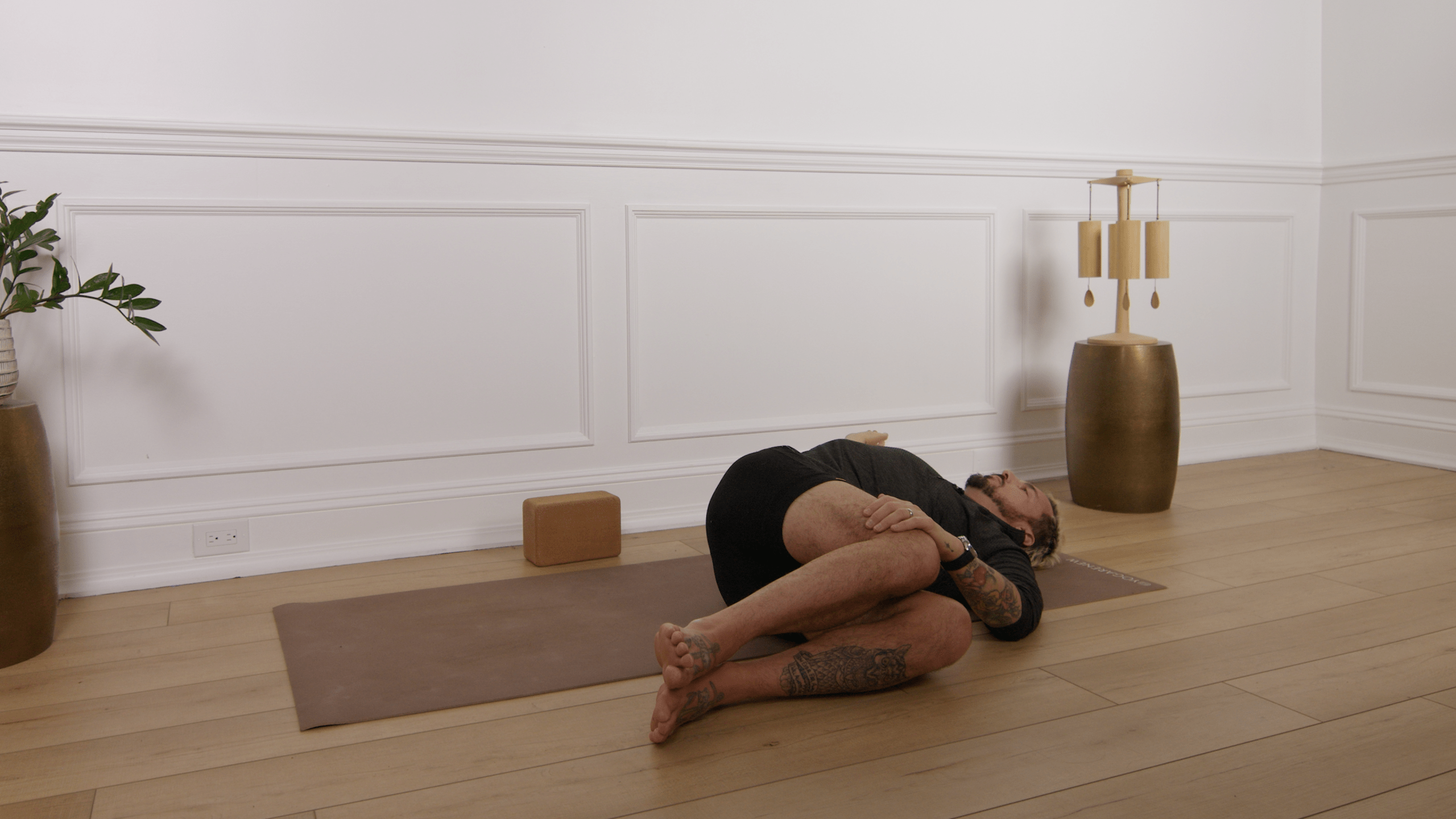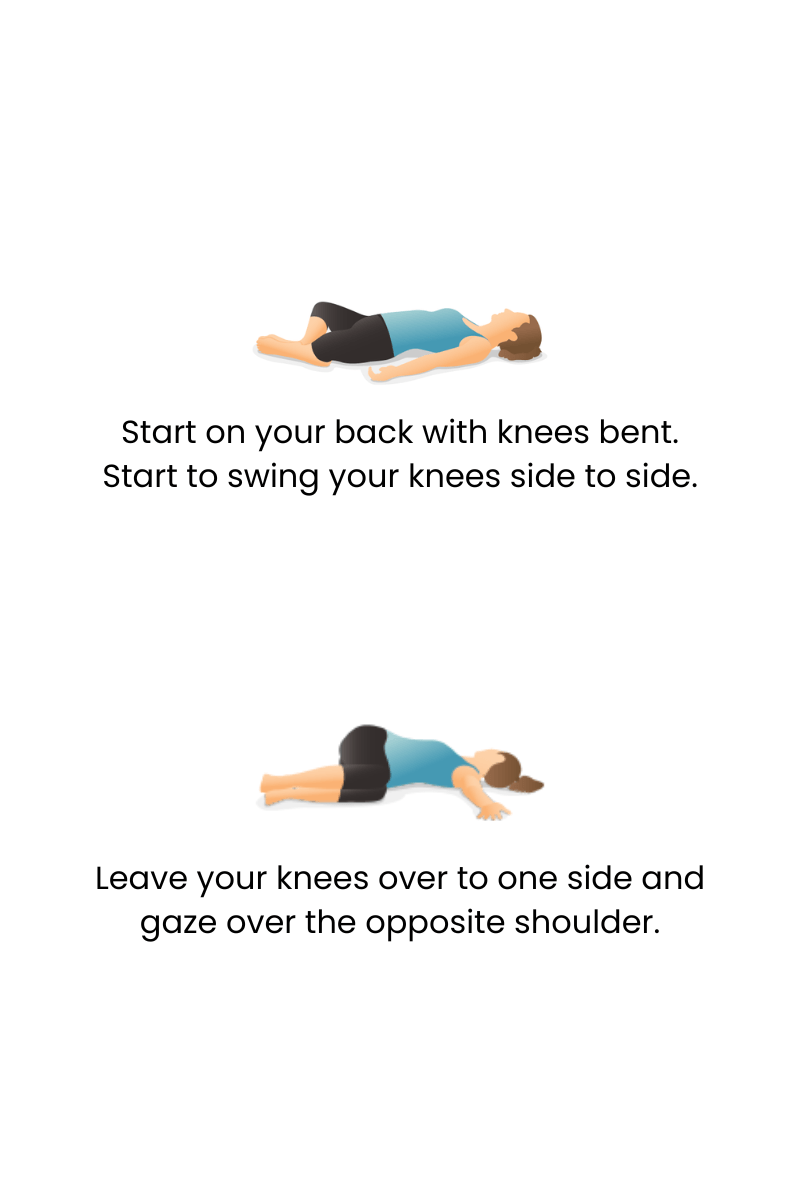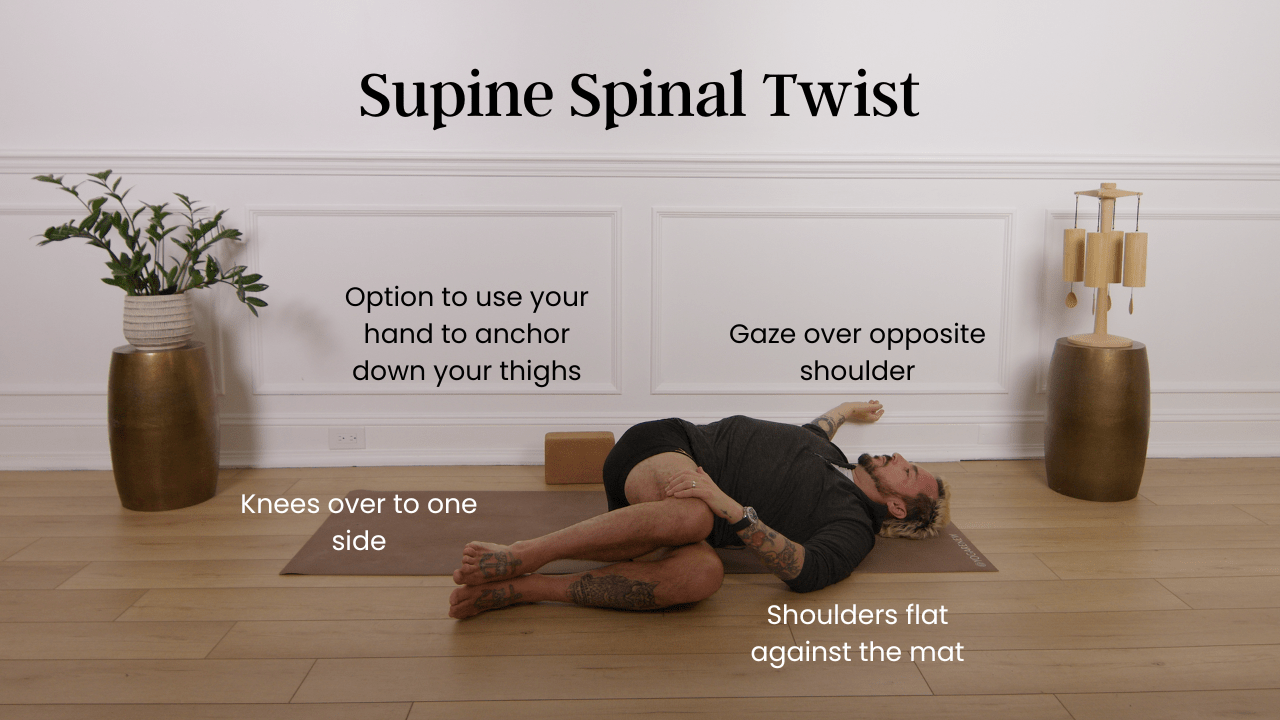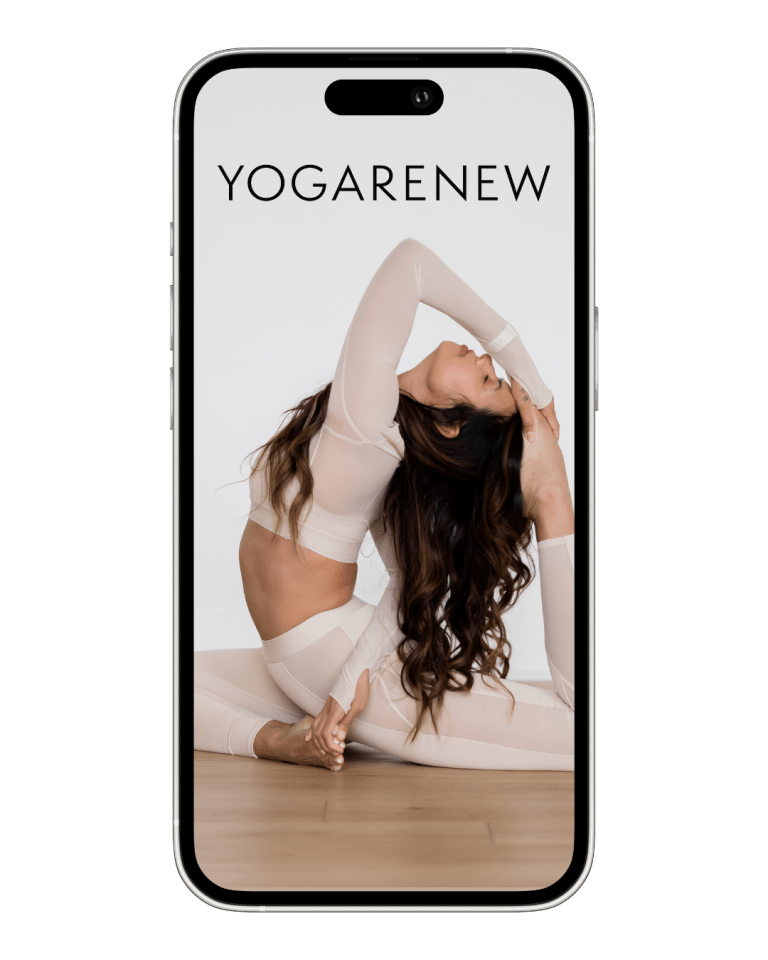What is Supine Spinal Twist?
English Name: Supine Spinal Twist
Sanskrit Name: Supta Matsyendrasana (pronounced SOOP-tah MAHT-see-en-DRAH-suh-nuh)
Category: Supine, Twist, Restorative, Beginner-Friendly

English Name: Supine Spinal Twist
Sanskrit Name: Supta Matsyendrasana (pronounced SOOP-tah MAHT-see-en-DRAH-suh-nuh)
Category: Supine, Twist, Restorative, Beginner-Friendly
Supine Spinal Twist, or Supta Matsyendrasana, is a gentle reclining twist that relaxes the body and soothes the spine. Practiced lying on the back with one leg crossed over the body, it offers a safe and accessible way to stretch the spine, open the chest, and release stored tension in the hips and lower back.
Often included at the end of yoga classes or in restorative sequences, this pose promotes deep relaxation while gently stimulating digestion and circulation.


Supta Matsyendrasana is a gentle and introspective posture that supports release on every level—physical, mental, and emotional. As the body reclines and the spine rotates, you create space to breathe, feel, and let go. It’s a perfect pose to unwind after a long day or to ground yourself before sleep.
Whether used in an active flow or a restorative sequence, Supine Spinal Twist is a simple but powerful reminder: sometimes the deepest transformation comes from softening, not striving.
Ideally, yes—but use props to support the knee so you don’t sacrifice shoulder grounding.
No problem—use a block or pillow under the knee, or let it hover.
Absolutely. It’s a calming, restorative pose perfect for winding down.
Hold for 5–10 breaths for a gentle release, or 1–3 minutes for a more restorative effect.
Yes, if done gently and with support. Avoid sharp or deep twisting sensations.

Explore classes & pose tutorials for any style, format, duration or experience level with a free account in the YogaRenew app. Or subscribe and gain access to workshops, live classes and more.